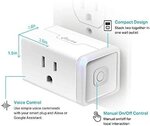Cyklefanatic
Well-Known Member
Although the Grin Satiator is the very best ebike battery charger I just can’t get past the high initial price.
So in order to maximize my battery life I came up with this simple solution.
Use a cheap mechanical rotary timer. The older ones can be set to 15 minute increments. Mine is around 30 years old.
So when I want to charge my battery I rotate the timer to charge for the next day. Usually I set the time to between 45-120 minutes to achieve 75-95% charge a few hours before my next ride.
This allows the battery plenty of time to cool down before charging and also after charging. It remains in its charged state only a few hours. I don’t do any complicated calculations I just guess at the amount of charge to add and I am always pretty close to what I need.
This strategy should give me a long battery life without spending a lot of money on a good charger.
The picture shows the timer setup to start charging in 12 hours for 1.5 hours and ready to ride in 15 hours or so. I don’t spend more than 10 seconds programming it.

So in order to maximize my battery life I came up with this simple solution.
Use a cheap mechanical rotary timer. The older ones can be set to 15 minute increments. Mine is around 30 years old.
So when I want to charge my battery I rotate the timer to charge for the next day. Usually I set the time to between 45-120 minutes to achieve 75-95% charge a few hours before my next ride.
This allows the battery plenty of time to cool down before charging and also after charging. It remains in its charged state only a few hours. I don’t do any complicated calculations I just guess at the amount of charge to add and I am always pretty close to what I need.
This strategy should give me a long battery life without spending a lot of money on a good charger.
The picture shows the timer setup to start charging in 12 hours for 1.5 hours and ready to ride in 15 hours or so. I don’t spend more than 10 seconds programming it.


